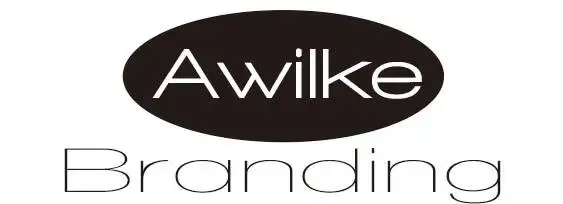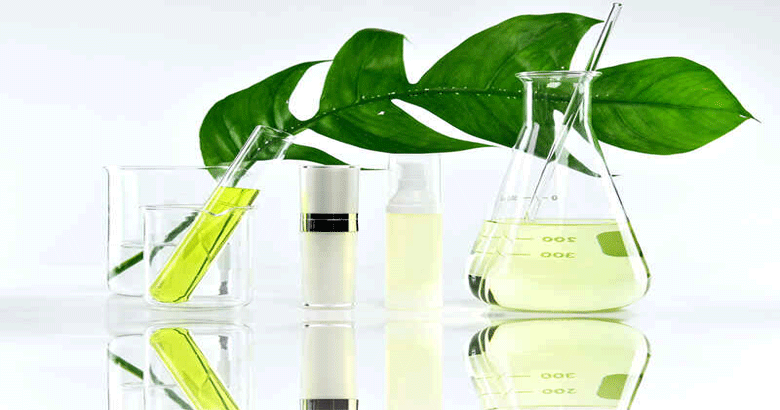
While low-quality hair wax is accessible in your nearest convenience store, they are certainly not good for daily use in the long term. Some harsh chemicals may lurk in these products, causing various complications. When paired with stress, illnesses, environmental factors, and even genetics, harmful chemicals inside men’s hair wax could lead to hair issues like thinning, spotting, scalp irritation, and even cancer in worse cases. Let’s look at the six most common harmful hair wax ingredients you should always avoid.
Symptoms Caused by Bad Hair Wax Products
Hair Breakage
Many factors usually cause hair breakage. For men, low-quality hair wax products containing harmful ingredients may be a significant cause. When a harmful chemical is in the hair, it can result in weakened hair strands that break easily.
Scalp Irritation
Itchiness is the most telltale sign of this symptom. Scalp irritation could lead to inflammation, redness, and even hair loss. To avoid scalp irritation, make sure your hair wax doesn’t contain harmful chemicals like parabens, sulfates, or synthetic fragrances.
Excessive Dryness
When your scalp has been feeling unnaturally dry, it could be a sign that your hair products contain some unwanted chemicals. These chemicals can strip your hair and scalp of their natural oils, leading to excessive dryness and discomfort. To avoid this, opt for hair waxes with natural, hydrating ingredients to maintain a healthy scalp.
Hair Thinning
If you feel like your hair has been losing its volume, there’s no need to worry that you’re getting bald. Your hair wax may just contain some chemicals that have caused the blockage of hair follicles, preventing proper hair growth and leading to a loss of volume.
Hair Loss
Prolonged use of harmful waxes can contribute to hair loss by damaging the hair follicles. When left untreated, the toxic chemicals in these hair waxes may lead to permanent hair thinning and bald patches.
Build-Up and Greasiness
Low-quality waxes often leave a heavy residue that can cause build-up, making hair look greasy and unclean. To combat this, opt for natural hair care products that contain safe ingredients that are right for your hair.

If you find yourself with these symptoms, it’s a sign that you may need to switch brands. In this article, let’s talk about the top hair wax ingredients to avoid to keep your hair healthy.
1. Parabens
Parabens prevent the growth of bacteria and mold in various products such as pharmaceuticals and food products. While not inherently harmful, they could cause unwanted problems when applied excessively on the scalp.
Different Types of Parabens
Methylparaben
This is one of the most common parabens because it prevents microbial growth. It’s absorbed easily into the skin and has been associated with skin irritation.
Ethylparaben
Similar to methylparaben, ethylparaben is used for its antimicrobial properties. It can penetrate the skin and has been linked to allergic reactions and hormone disruption in studies.
Propylparaben
Known for its ability to inhibit the growth of mold and yeast, propylparaben sees the most use alongside other parabens in cosmetic products. Thus, it has been found to have endocrine-disrupting effects and can potentially interfere with hormone function.
Butylparaben
This paraben is used less frequently than others due to its stronger potential for skin irritation. It’s effective against a wide range of microbes. However, they can also disrupt the hormones and cause allergic reactions.
Why They’re Harmful Hair Wax Ingredients
Disrupts Hormones
Parabens can mimic estrogen in the body, binding to estrogen receptors and potentially disrupting normal hormone signaling and balance. As a result, you could achieve early hair loss, or unfavorable changes in hair growth patterns.
Causes Skin Irritation
Parabens can irritate the skin, leading to symptoms such as redness, itching, and inflammation. This is particularly problematic for men with sensitive scalp or conditions like dermatitis, as it can exacerbate existing skin issues.
Potentially Carcinogenic
Parabens may pose a potential risk of cancer due to their ability to mimic estrogen and potentially disrupt hormone balance, which can contribute to the development of cancerous cells over time. This is why they’re considered harmful hair wax products, and should be avoided.
Harsh Environmental Impacts
The effects parabens have on the environment could include bioaccumulation in aquatic organisms, disruption of ecosystems, and potential harm to wildlife exposed to contaminated water sources. Therefore, they should be avoided for customers and businesses who wish to be more environmentally friendly.
2. Sulfates

Sulfates are surfactants commonly used in personal care products like shampoos and hair waxes. Additionally, they help create lather and remove dirt and oil from the hair. However, sulfates are known to be harsh on the scalp and hair.
Different Types of Sulfates
Sodium Lauryl Sulfate (SLS)
A strong detergent and surfactant used in many personal care products to create foam and lather. It can strip away natural oils from the hair and scalp, leading to dryness and irritation.
Sodium Laureth Sulfate (SLES)
A milder form of SLS, often used in products to reduce potential irritation while still providing cleansing and foaming properties. However, it can still cause dryness and may irritate sensitive skin.
Ammonium Lauryl Sulfate (ALS)
Similar to SLS, ALS is a strong surfactant used for its cleansing and foaming abilities. It can be harsh on the scalp and hair, potentially causing dryness and irritation with prolonged use.
Ammonium Laureth Sulfate (ALES)
A milder version of ALS, ALES is used in some products to reduce the harshness of cleansing while still providing effective foaming and cleansing properties. It can still contribute to dryness and irritation, especially in sensitive individuals.
Why They’re Harmful Hair Wax Ingredients
Strips Natural Oils
Sulfates are strong cleansers that can strip away natural oils from the hair and scalp, leading to dryness and potentially causing brittle hair.
Scalp Irritation
Sulfates can irritate the scalp, causing redness, itching, and discomfort, especially for individuals with sensitive skin or scalp conditions.
Hair Damage
Prolonged use of sulfates can weaken the hair shaft and contribute to breakage and split ends, making the hair appear dull and lifeless over time.
3. Phthalates

Phthalates are a group of chemicals used as plasticizers to enhance the flexibility and durability of plastics. However, phthalates have been linked to various health concerns. Therefore, their use in products intended for men’s grooming is a growing concern due to their possible adverse effects on health.
Different Types of Phthalates
Diethyl phthalate (DEP)
DEP is commonly used as a solvent in fragrances and a fixative to help scents last longer. It can also enhance the texture and spreadability of hair wax and other cosmetic products.
Dibutyl phthalate (DBP)
DBP is often utilized in nail polishes and hair sprays to improve flexibility and durability. In hair wax solutions, DBP can contribute to product performance by enhancing texture and smooth application.
Diisobutyl phthalate (DIBP)
Similar to DBP, DIBP is used to enhance the flexibility and resilience of various products. It may be included in hair wax formulations to improve product consistency and effectiveness.
Dimethyl phthalate (DMP)
DMP serves as a solvent for dyes and a plasticizer in cellulose plastics. In hair wax, it helps maintain product texture and stability without making the hair feel greasy or weighed down.
Why They’re Harmful
Hormone Disruption
Phthalates can interfere with the body’s hormone system, particularly by blocking estrogen and testosterone. When applied to the scalp, these chemicals could cause disruptions in hormone regulation locally, potentially leading to scalp irritation, hair follicle damage, and in some cases, hair loss or thinning.
Reproductive and Developmental Toxicity
Studies have linked phthalate exposure to adverse effects on reproductive health, including reduced sperm quality, fertility issues, and birth defects. They can also impact the development of the reproductive system in fetuses and infants.
Potential Carcinogenicity
While evidence is not conclusive, some phthalates have been classified as possible carcinogens due to their ability to induce tumors in animal studies. Human studies are ongoing to determine any potential links between phthalate exposure and cancer risks.
4. Bonding Agents
Bonding agents are ingredients used in hair wax products to improve adhesion and hold. They help the wax adhere to the hair strands and provide long-lasting styling effects. However, some bonding agents can be considered harmful hair wax ingredients due to potential health concerns and their impact on hair health.
Different Types of Bonding Agents
Polyvinylpyrrolidone
PVP is a common bonding agent used in hair waxes for its film-forming properties. It helps the wax adhere to the hair and provides a strong hold without stiffness. However, excessive use can lead to buildup and potential scalp irritation.
Polyethylene Glycol
PEGs are used as bonding agents and emulsifiers in hair waxes to improve texture and spreadability. They help create a smooth application and enhance product performance.
Acrylates Copolymer
This bonding agent is known for its strong adhesive properties, providing long-lasting hold in hair waxes. It forms a flexible film on the hair shaft, allowing for easy styling. However, it can be difficult to wash out and may cause buildup over time.
Ceteareth-20
A bonding agent and emulsifier derived from fatty alcohols, Ceteareth-20 helps blend ingredients in hair wax formulations. It enhances the product’s consistency and smoothness.
Why They’re Harmful
Scalp Irritation
Some bonding agents like PVP and acrylates copolymer can cause scalp irritation, redness, and itching, especially in men with sensitive skin or allergies to these ingredients.
Buildup
Bonding agents such as PEGs and acrylates copolymer can contribute to product buildup on the hair and scalp over time. This buildup can weigh down the hair, making it look dull and lifeless.
Potential Contaminants
Certain bonding agents, like PEGs, may be contaminated with impurities such as 1,4-dioxane, a known carcinogen. Continued exposure to these contaminants through hair wax products raises health concerns over time.
5. Petrolatum (Petroleum Jelly)

Petrolatum, commonly known as petroleum jelly, is a byproduct of petroleum refining. It is used in hair wax and other cosmetics for its ability to create a barrier on the skin and hair, preventing moisture loss and providing a glossy appearance. However, petrolatum is considered controversial in cosmetics due to potential health and environmental concerns.
Petrolatum Contamination
Depending on the refining process, petrolatum can be contaminated with a substance named polycyclic aromatic hydrocarbons. Also known as PAHs, these substances are a group of chemicals that occur naturally in coal, crude oil, and gasoline. They can also be formed during the incomplete burning of organic substances like coal, oil, gas, wood, and garbage. Therefore, their presence in petrolatum due to contamination poses health risks when used in cosmetics and personal care products such as hair wax.
Effects of Contaminated Petrolatum
Skin Clogging
As it comes into contact with the scalp, contaminated petrolatum can cause pore blockage and prevent the skin from breathing naturally. In hair health, this could lead to various complications such as scalp irritation, follicle inflammation, and potentially hindered hair growth.
Carcinogenic Risk
The PAHs are known to increase the risk of cancer. This happens when PAHs are absorbed into the body through various routes, such as inhalation, ingestion, or skin absorption. Once inside the body, PAHs can interact with cellular DNA, leading to mutations that may initiate cancerous growths.
Hormone Disruption
Some contaminants in petrolatum may disrupt the endocrine system, potentially affecting hormone balance and leading to reproductive and developmental issues over time.
6. Silicones
Silicones are synthetic compounds often included in hair wax as they provide excellent smoothing and conditioning benefits. They create a protective barrier on the hair, which helps reduce frizz, enhance shine, and make styling easier. Despite these advantages, silicones are considered controversial as harmful hair wax ingredients due to various concerns.
Harmful Effects of Silicones
Silicone Buildup
Silicones, while initially providing smoothness and shine to hair, can accumulate over time. This buildup forms a resistant layer on the hair strands and the scalp, making it challenging to cleanse with regular shampooing. As a result, hair may appear weighed down, dull, and prone to breakage, while the scalp’s natural balance can be disrupted.
Scalp Irritation
Hair wax containing silicones can lead to scalp irritation. These compounds create a barrier that can trap dirt, sweat, and styling residues on the scalp. For individuals with sensitive skin, this buildup may cause irritation, itchiness, and redness, affecting overall scalp health and comfort.
Allergic Reactions
Although uncommon, allergic reactions to silicones in hair wax can occur. Symptoms might include itching, redness, swelling, or rash where the product is applied. People with sensitive skin or known allergies should be cautious and consider patch testing before using products containing silicones to avoid adverse reactions.
How to Avoid Harmful Hair Wax Ingredients

Whether you’re an avid user of men’s hair wax, or a business wishing to offer only the best for their customers, there are various reliable ways to prevent and avoid harsh chemicals in your products. Let’s take a look at some of them.
As a Consumer
1. Check the Label
Always read the ingredient list on hair wax products before purchasing. Look out for common harmful ingredients like parabens, sulfates, and silicones. Aside from these harmful ingredients, you should also keep in mind the various expiration dates. Some ingredients, despite being safe and benign, can cause harmful side effects when they are past a certain date.
2. Choose a Trusted Brand
Opt for brands known for their commitment to safe and quality ingredients. Trusted brands often prioritize transparency and rigorous testing to ensure their products are safe for you to consume for a long time.
3. Recognize the Names of Harmful Ingredients
You don’t need to know every single harmful hair wax ingredient. Simply recognize the patterns in their names. For instance, ingredients such as parabens, sulfates, and silicones usually end in “-cone” or “-oxane”. Another example is formaldehyde-releasing agents, which often end in “-hyde” or include terms like “formaldehyde” within their chemical names.
As a Business
Choosing a trusted manufacturer is the best way for you, as a business, to avoid harmful ingredients in hair wax. Therefore, your first goal is to find a reliable private labeling partner. They are well-versed in the industry and are sure to know the various harmful ingredients in hair wax and their harsh effects on the body. They can help you manufacture a hair wax line that’s free from harsh ingredients, allowing your brand to shine as a provider of safe and healthy hair care products.
Awilke Branding is the Right Partner for You
When it comes to private labeling partners, we at Awilke Branding shine above the rest. With our wealth of experience in creating products from skin cosmetics to hair care, we are sure to provide you with a hair wax line that your customers can safely use without worries. We strive to avoid harmful chemicals and only offer you the best solutions and formulas that make your brand shine.
Here are the advantages of having us as your private labeling partner:
Expertise in Formulation
Awilke Branding brings extensive experience in formulating skin cosmetics and hair care products. The hair wax products we create are not only effective but also safe for your customers, avoiding harmful chemicals that can compromise hair and scalp health.
Commitment to Safety
We prioritize safety in our formulations, adhering to strict quality standards and avoiding harmful ingredients such as parabens, sulfates, silicones, and formaldehyde-releasing agents.
Customized Solutions
We offer customized solutions tailored to your brand’s specific needs and preferences. Whether you’re looking for a certain fragrance, texture, or targeted hair care benefits, we collaborate closely with you to develop hair wax formulations that align with your brand’s identity and market demands.
Contact us today or visit our website for the best hair wax solutions for your brand!

 Hair Wax or Pomade: Which One Is Best For You
Hair Wax or Pomade: Which One Is Best For You


